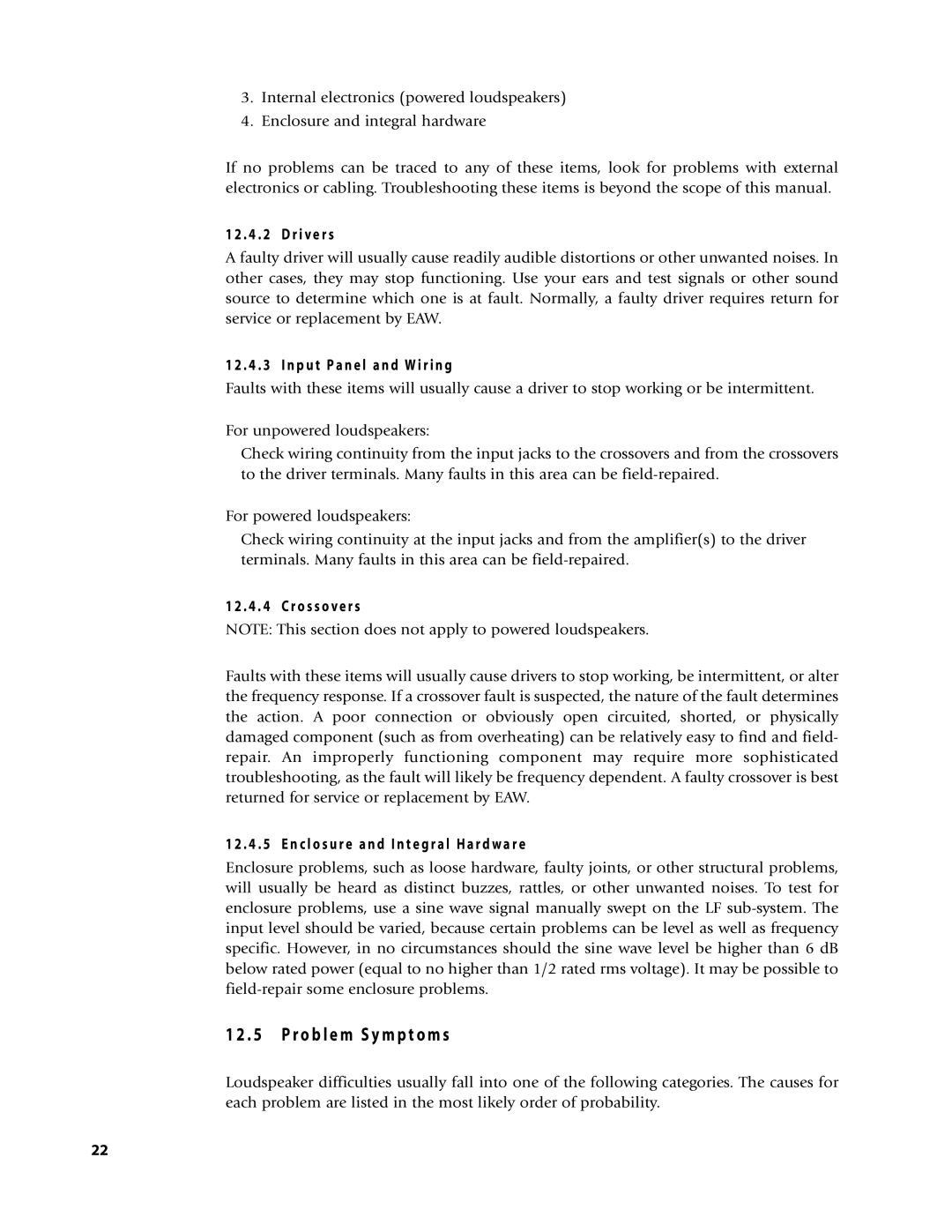3.Internal electronics (powered loudspeakers)
4.Enclosure and integral hardware
If no problems can be traced to any of these items, look for problems with external electronics or cabling. Troubleshooting these items is beyond the scope of this manual.
1 2 . 4 . 2 D r i v e r s
A faulty driver will usually cause readily audible distortions or other unwanted noises. In other cases, they may stop functioning. Use your ears and test signals or other sound source to determine which one is at fault. Normally, a faulty driver requires return for service or replacement by EAW.
1 2 . 4 . 3 I n p u t P a n e l a n d W i r i n g
Faults with these items will usually cause a driver to stop working or be intermittent.
For unpowered loudspeakers:
Check wiring continuity from the input jacks to the crossovers and from the crossovers to the driver terminals. Many faults in this area can be
For powered loudspeakers:
Check wiring continuity at the input jacks and from the amplifier(s) to the driver terminals. Many faults in this area can be
1 2 . 4 . 4 C r o s s o v e r s
NOTE: This section does not apply to powered loudspeakers.
Faults with these items will usually cause drivers to stop working, be intermittent, or alter the frequency response. If a crossover fault is suspected, the nature of the fault determines the action. A poor connection or obviously open circuited, shorted, or physically damaged component (such as from overheating) can be relatively easy to find and field- repair. An improperly functioning component may require more sophisticated troubleshooting, as the fault will likely be frequency dependent. A faulty crossover is best returned for service or replacement by EAW.
1 2 . 4 . 5 E n c l o s u r e a n d I n t e g r a l H a r d w a r e
Enclosure problems, such as loose hardware, faulty joints, or other structural problems, will usually be heard as distinct buzzes, rattles, or other unwanted noises. To test for enclosure problems, use a sine wave signal manually swept on the LF
1 2 . 5 P r o b l e m S y m p t o m s
Loudspeaker difficulties usually fall into one of the following categories. The causes for each problem are listed in the most likely order of probability.
22
